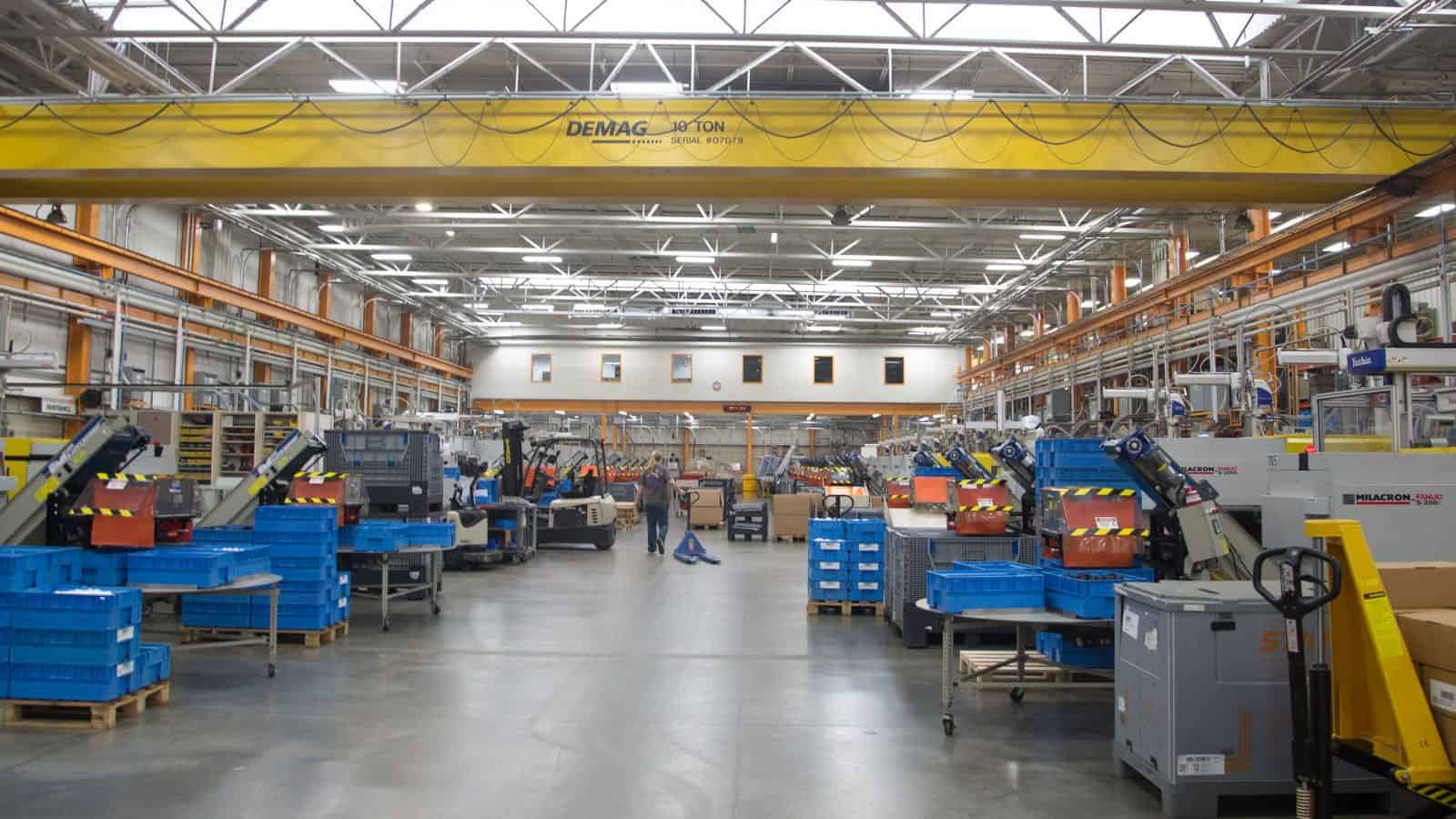NAM Election Playbook: Synergies, Not Sides
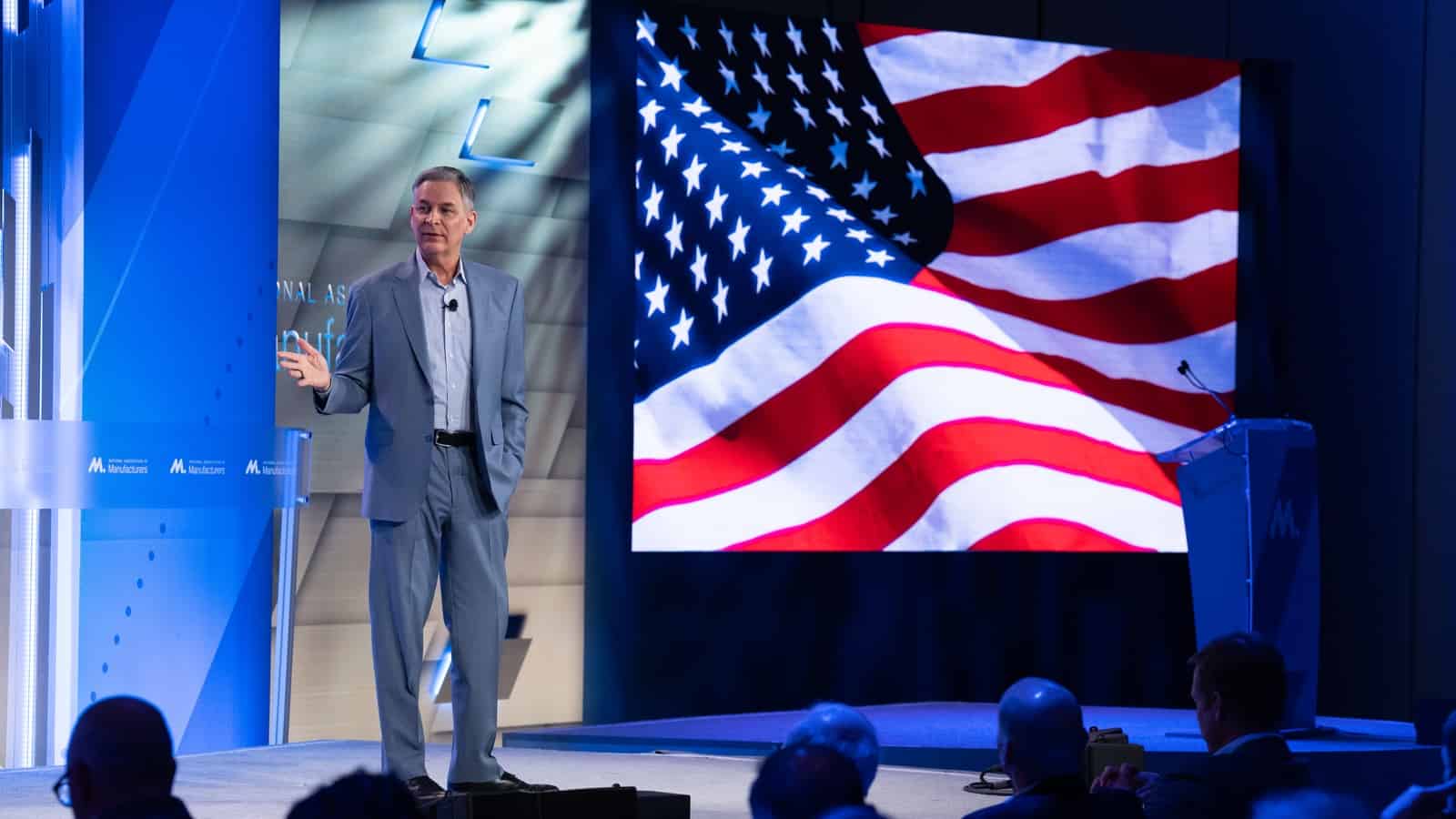
The NAM isn’t playing favorites in an election year. Instead, it’s redoubling its post-partisan approach to advocacy. NAM President and CEO Jay Timmons’ message to manufacturers: the association will leverage its hard-won, bipartisan influence to advance manufacturers’ priorities, no matter who’s in charge.
- “That’s what we’re about. Policy that helps people. Policy—not politics, personality or process. That’s what will guide us in 2024 and beyond,” Timmons said in a speech that helped kick off the NAM board meeting this week, before more than 200 of manufacturing’s leading executives in Phoenix, Arizona.
Why it’s important: “Both sides want us on their side,” Timmons emphasized while recounting a recent legislative debate. That trust and respect, he said, translates into wins: agencies modifying rules to avoid lawsuits and high-level White House officials acknowledging the impact of NAM campaigns.
Battles loom: But the very system enabling these victories is under threat, Timmons warned, placing the onus on manufacturers to not just build products, but to empower the NAM to utilize their voices and stories to advance policies that strengthen the economy and underpin democracy and free enterprise.
- Tax showdown: Any new taxes on manufacturers are a nonstarter, Timmons vowed, staking a claim in the looming 2025 tax fight and reiterating manufacturers’ call for immediate passage in the Senate of full capital expensing, R&D expensing and interest deductibility.
- Regulatory onslaught: From new Environmental Protection Agency air standards to the broader regulatory agenda, Timmons argued that overzealous rules impede manufacturing competitiveness. He specifically criticized the new PM2.5 standards, saying the EPA “set them at a level that is lower than the EU or the UK, and imposed a compliance timeline that is far more aggressive.”
- LNG halt: Timmons blasted the Biden administration’s liquefied natural gas export permit freeze, calling it shortsighted and detrimental to both manufacturers and broader U.S. energy and climate goals. “They want to address climate change?” he asked. “So they’re going to have other countries buying and burning dirtier energy? They want to support our allies around the world? So they’re going to force Europe and Japan and others to get their fuel from the likes of Russia?”
- Immigration deadlock: He criticized inaction on both sides of the aisle, saying border security and workforce solutions can—and must—coexist.
Opportunity ahead: Despite considerable challenges, Timmons sees an opportunity for manufacturers to take the lead in promoting American values and sound policies that fuel the industry’s strength.
- “This election year, manufacturers can help renew a shared sense of purpose,” Timmons told executives. “Remind Americans why our country—our system rooted in God-given human rights and fundamental freedom—is worth celebrating and defending.” At stake is not just the next regulatory win, but the very system that made U.S. manufacturing a global powerhouse, he said.
- America’s bicentennial celebration helped us see beyond the divisions of the day, Timmons observed. As we approach the 250th anniversary of the signing of the Declaration of Independence, “it’s manufacturers who are positioned to cultivate that patriotic spirit,” Timmons said. It’s more than just bottom lines. “We can help mend the divides—so that we can promote policy that will strengthen manufacturing in America.”
Arizona: Manufacturing’s Crossroads
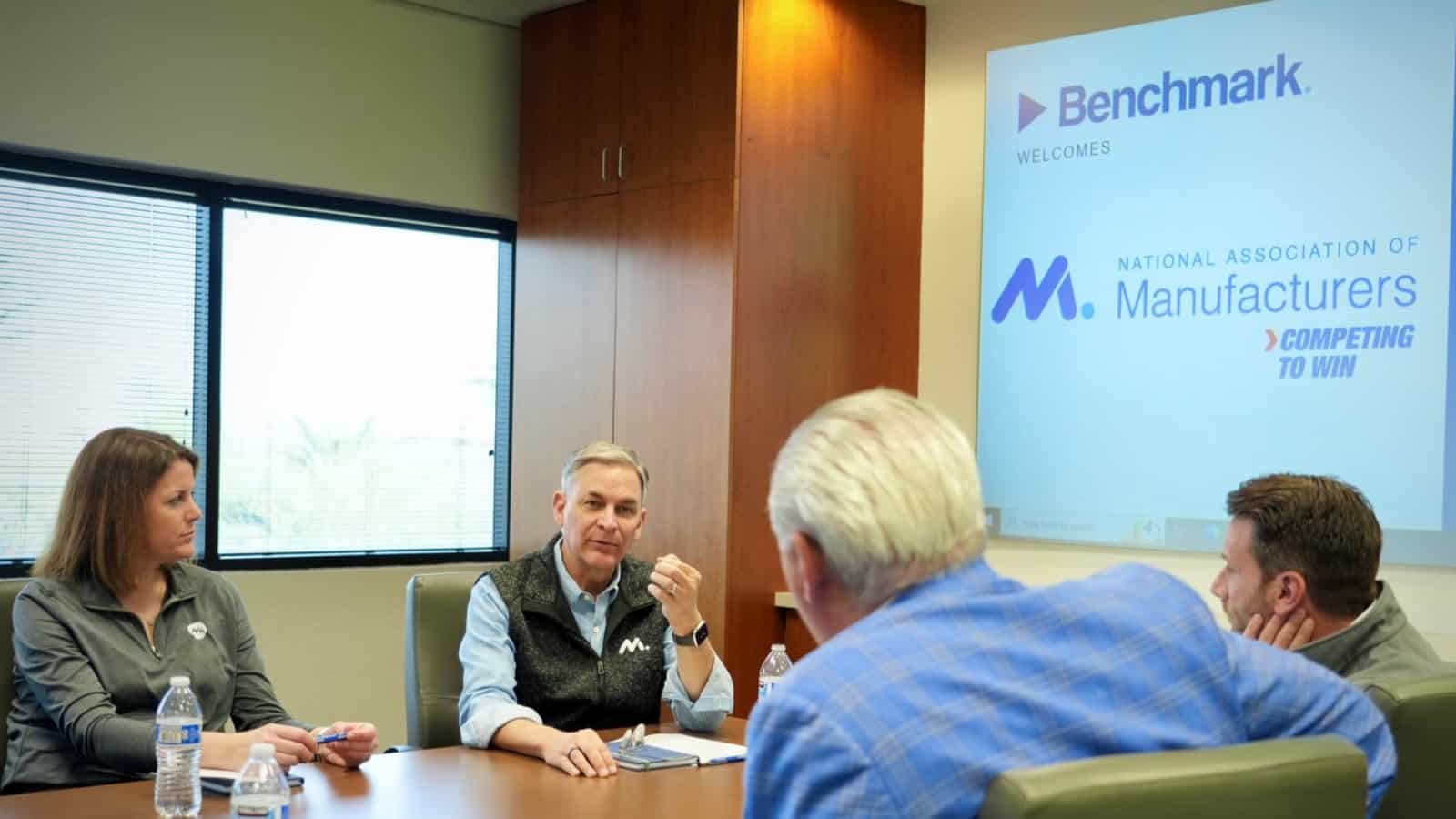
In the heat of Arizona’s “Silicon Desert” and surrounding communities, the future of America’s global competitiveness and climate goals aren’t just being forged—they also hang in the balance.
Last week for the first time in 2024, the NAM brought its Competing to Win Tour to Arizona, and that stark contrast between the status quo and the probable future was on display in Phoenix at global semiconductor equipment manufacturer Benchmark and small manufacturer Valley Forge & Bolt and at Resolution Copper in Superior.
- NAM President and CEO Jay Timmons, Manufacturing Institute President and Executive Director Carolyn Lee—who leads the NAM’s 501(c)3 workforce development and education affiliate—and Arizona Chamber of Commerce & Industry President and CEO Danny Seiden met with local manufacturers to gain their perspective and insights.
Why it matters: The Biden administration and Congress have secured key measures to bolster manufacturing in the U.S., including the NAM-championed CHIPS and Science Act and tax credits in the Inflation Reduction Act to manufacturers investing in advanced production and energy projects. But raw material, workforce and tax and regulatory policy challenges threaten to undermine policy aspirations.
Silicon Desert expansion: With the CHIPS and Science Act poised to transform the sector, Benchmark President and CEO Jeff Benck and Executive Vice President and Chief Operating Officer Dave Valkanoff led the tour of their state-of-the-art Phoenix facility.
- In a good spot: Benchmark is well-positioned for the coming growth in semiconductor equipment demand. It is focused on securing its workforce and navigating a complex regulatory landscape to maximize the opportunity.
- Workforce woes: Even with the NAM and the MI’s Benchmark-supported Creators Wanted campaign boosting the industry’s image and the MI’s FAME initiative training thousands of technicians, finding skilled labor remains the top challenge. Benchmark advances earn-and-learn programs and partnerships with Arizona State University and community colleges to help fill the pipeline, actions that, according to Lee, “can help change the game.”
- Red tape delays: Regulatory hurdles pose obstacles. Benchmark seeks streamlined permitting and sensible rules to maintain their global edge.
- Bullish outlook: Benck is optimistic about the future of U.S. manufacturing and semiconductor demand. Investments in people and technology position the company well to deliver the next generation of innovation.

Taxes and immigration: The NAM’s return visit to Valley Forge & Bolt, after a stop last year with Sen. Kyrsten Sinema (I-AZ), shone a spotlight on the real-world impact of stalled tax policy and the urgent need for reform.
- Valley Forge & Bolt saw record sales in 2023 thanks to 2017 tax reforms boosting its equipment upgrades. Now, with provisions like full capital investment expensing stalled in Congress, orders have slowed.
- CEO Michele Clarke and COO Bret Halley made the case for R&D expensing, interest deductibility and a return to full capital investment expensing. Without these, they said, job growth and America’s manufacturing competitive edge are at risk.
- Skilled workers needed: Despite its success, Valley Forge says finding skilled workers is a constant struggle. Immigration reform is a must to secure the right talent pipeline, said Clarke. “Did you notice our engineers? Most of them are under 30 because we’re snatching them right out of college,” added Clarke. “The engineering talent in this country is dwindling, and we’re not authorizing enough green cards. I, myself, was a green card holder before I became a citizen.”

Policy roadblocks: The NAM’s visit to Rio Tinto’s Resolution Copper site highlighted the urgency of permitting reform in the face of critical mineral needs.
- Copper’s critical role: Copper is essential for clean energy. Electric vehicles, solar power grids and wind turbines all demand huge quantities. Yet, the U.S. remains heavily reliant on imported copper, jeopardizing progress.
- Massive potential: The domestic solution lies within the stalled Resolution Copper mine. With its potential to supply 25% of U.S. copper demand, it’s poised to be a key piece of the puzzle.
- Project in limbo: Despite a 350-strong workforce modernizing and maintaining the mine, permitting delays stifle the project’s full impact.
- Sustainable practices: “Resolution Copper is the future of eco-conscious mining,” said NAM Managing Vice President of Brand Strategy Chrys Kefalas, who toured the site. “Their team innovates sustainable practices, leads in water conservation and even supplies 7 billion gallons of water to Arizona farms. And what is more, it isn’t just the facts of the matter or what you saw that drives this point home, but the people who have worked on the site for years make all that clear with the pride they have about the project and their determination to see Resolution Copper through to making lives better for everyone.”
- Jobs and growth: Led by President and General Manager Vicky Peacey, the project promises to contribute $1 billion annually to the economy and more than 1,500 Arizona jobs. “This is about people, jobs and supply chains; and it’s also about realizing clean energy ambitions at the speed and scale that climate goals demand,” said Kefalas.

The bottom line: “The future of U.S. manufacturing might hinge on these contrasting stories. Are we a nation that champions innovation, attracts and keeps the brightest here, supports our manufacturers and tackles climate goals with homegrown solutions, or one that stalls progress in its own backyard,” said Timmons.
- “Arizona is at the epicenter of American manufacturing’s next chapter, and with smart policies and fewer unforced errors at the federal level, we can clear the runway for growth,” added Seiden.
Manufacturing Leaders: Congress Must Act Now
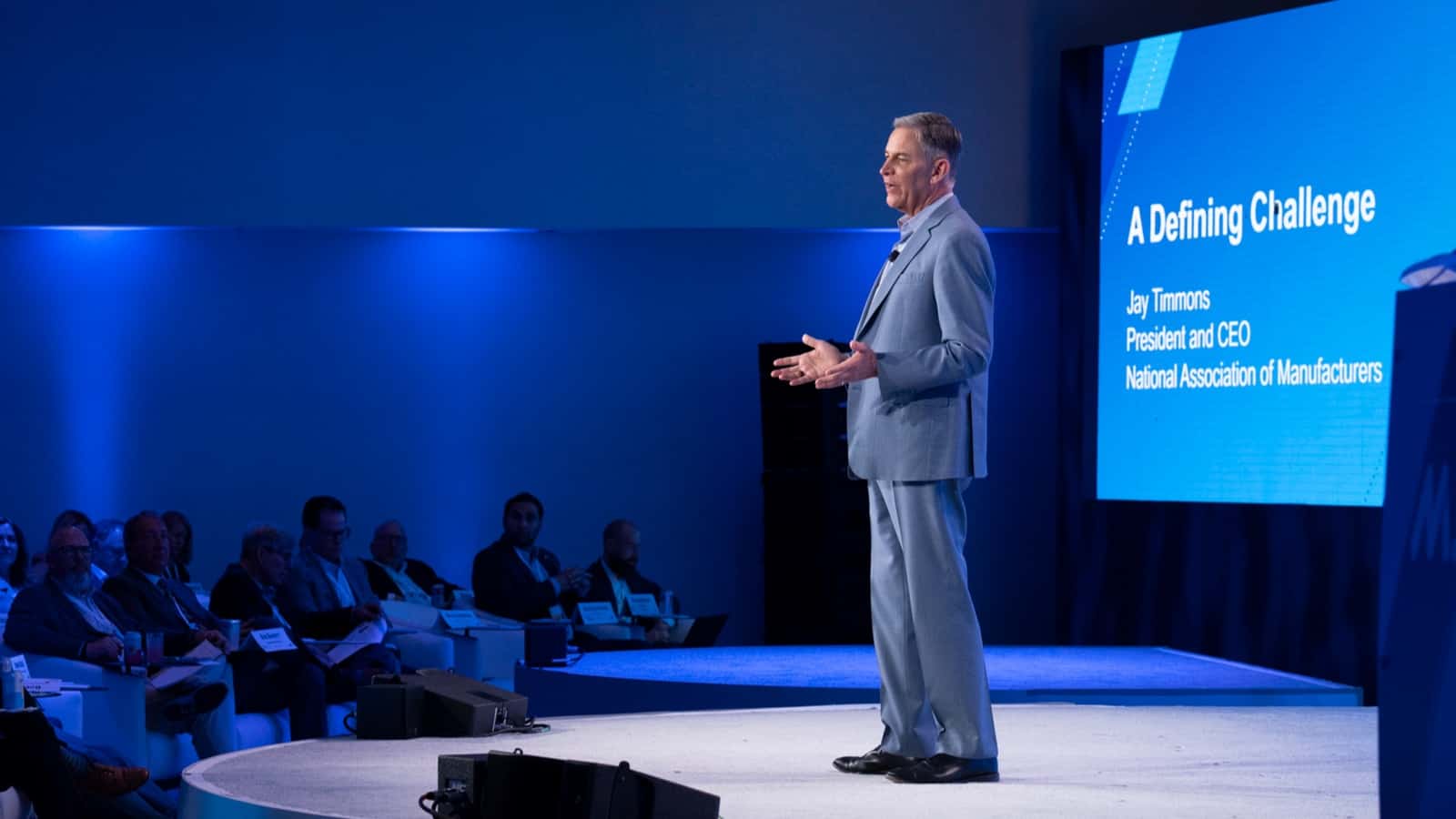
It’s imperative for the strength of not only manufacturing in the U.S. but democracy worldwide that Congress move now to advance a security package and government funding, said NAM President and CEO Jay Timmons, Johnson & Johnson Executive Vice President and Chief Technical Operations & Risk Officer and NAM Board Chair Kathy Wengel and Rockwell Automation Chairman and CEO and NAM Board Vice Chair Blake Moret on Monday.
What’s going on: “For the strength of our democracy here at home and the protection of democracy around the world, manufacturers are calling on Congress and President Biden to act swiftly to keep the government open, pass pro-growth tax provisions, secure our border and approve urgently needed aid for Ukraine,” the three manufacturing leaders told Congress ahead of Biden’s meeting with congressional leaders.
Why it’s important: In March 2022, shortly after Russia’s invasion of Ukraine, the NAM Board passed a unanimous resolution condemning the act and expressing solidarity with the Ukrainian people in their fight for independence.
- In February 2023, Ukrainian President Volodymyr Zelenskyy spoke to the NAM Board in a speech to the American business community. “We will prove that democracy is stronger than tyranny,” Zelenskyy said in that address. “When Russia loses, we will prove that terrorist states cannot overcome the power of a united democratic world.”
What should be done: Timmons, Wengel and Moret hammered home the criticality of swift action by Congress.
- “With time running short, manufacturers are looking to our leaders to act. They can address all of these priorities. In fact, they must address them all—for the future of our industry, the security of our country and the defense of democracy.”
State of Manufacturing: Strong, But Not Guaranteed
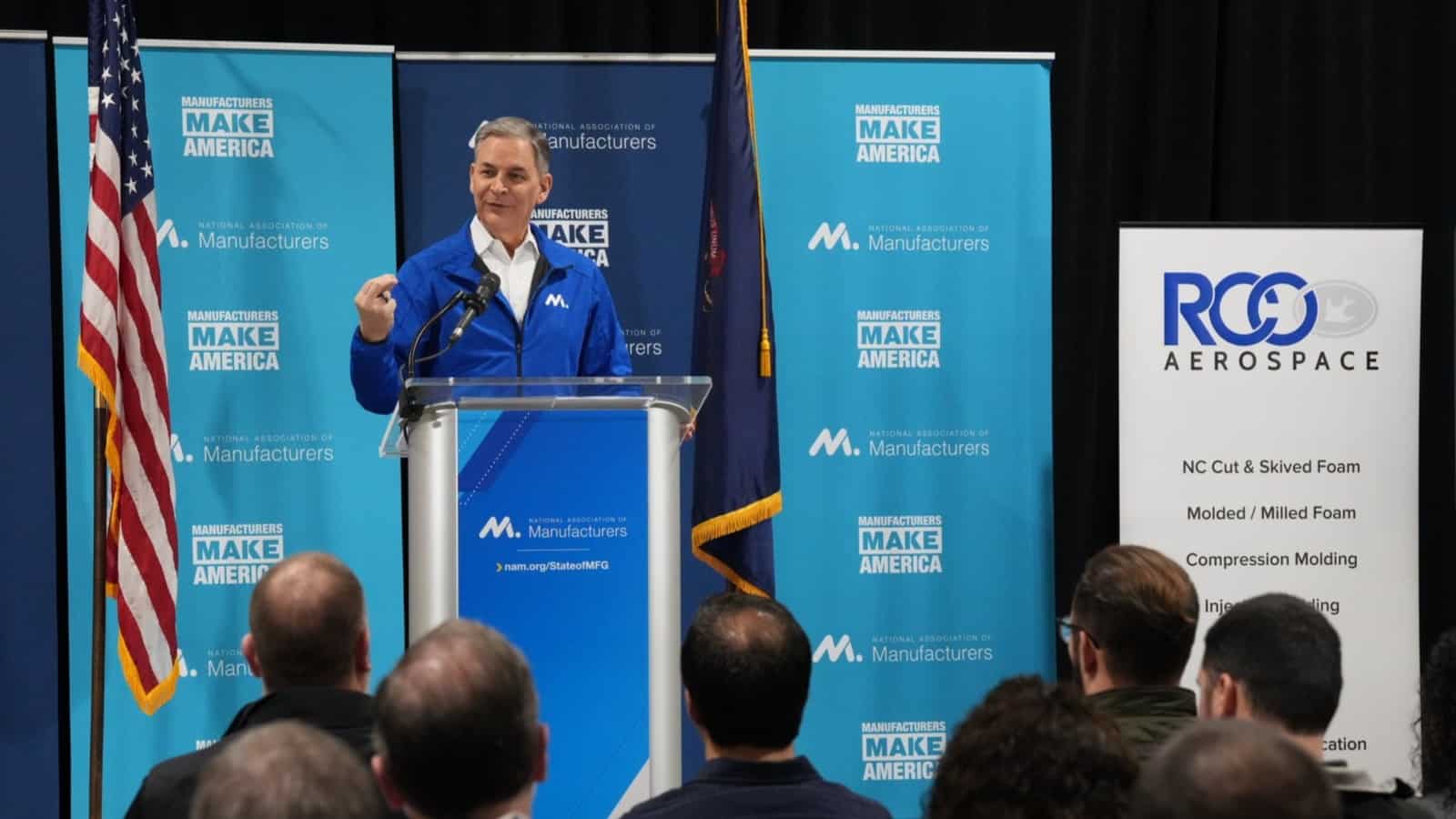
What’s the state of manufacturing in the U.S.? Strong and resilient—but under threat.
That was the message delivered by NAM President and CEO Jay Timmons and other speakers at the NAM’s 2024 State of Manufacturing Address at RCO Engineering in Roseville, Michigan, on Thursday.
- Attending the address were nearly 100 RCO Engineering team members—some of whom are second- or even third-generation manufacturing workers—as well as local education leaders, including Macomb Community College President James O. Sawyer IV and Macomb Intermediate School District Superintendent Michael R. DeVault.
- The address was the keystone event of this week’s launch of the 2024 Competing to Win Tour, an opportunity to visit local manufacturers and report on where the industry stands at the start of 2024.
A place of strength: “The state of the manufacturing industry depends on the people in it,” Timmons said in remarks covered by POLITICO Influence (subscription). “And we are now 13 million strong—the largest in more than 15 years. If we can continue on this trajectory, this resurgence, imagine what the state of manufacturing might look like in 2030.”
- Johnson & Johnson Executive Vice President and Chief Technical Operations & Risk Officer and NAM Board Chair Kathy Wengel echoed that sentiment in her opening remarks. “Manufacturers are improving the quality of life for everyone. … Together, we can lead the way.”
- And Michigan Manufacturers Association President and CEO John Walsh told the audience at RCO Engineering, “You are making parts here that are going everywhere. It’s a phenomenal story for us in Michigan. It not only helps you as employees here, but it helps your families, it helps your communities. It builds our state. It builds our nation.”
- “Manufacturing … is an industry that is vital to our economic competitiveness,” said Macomb County Executive Mark Hackel. “In Macomb County, we’re not just witnessing the growth of manufacturing; we’re actively contributing to it. What we are doing here is creating an environment where innovation thrives and where manufacturers can grow as well as compete.”
- RCO Engineering General Manager Jeff Simek agreed. “The manufacturing brand is coming back, and it’s coming back alive—and you guys are a big, huge piece of that,” he said to loud applause.
Fork in the road: But continued manufacturing strength isn’t guaranteed, Timmons said. Rather, it’s in large part contingent on sound policy decisions by U.S. leaders.
- “We will head in the wrong direction if Congress lets taxes go up on small businesses when rates expire next year,” Timmons said. “Or if they hit you with even more regulations—regulations even harsher than ones they have in Europe. Or if they fail to solve the immigration crisis because they put politics over good policy. Or choose trade barriers rather than trade agreements, or … abandon our allies overseas and put our national security at risk.”
- The recent regulatory onslaught by federal agencies—which Timmons discussed with Fox Business earlier this week—must stop and be replaced with sensible rulemaking done in cooperation with manufacturers, he said.
- He cited the Environmental Protection Agency’s recently finalized, overly stringent standard for particulate matter and the Biden administration’s decision to freeze liquefied natural gas export permits. This “forc[es] our allies, like Europe and Japan, to buy dirtier energy from countries we can’t trust, potentially enriching the likes of Russia … undercut[ting] our most basic national security objectives,” Timmons said.
No new taxes: The NAM’s message to Congress on taxes is simple: “No new taxes on manufacturers in America,” Timmons said.
- “And while we’re at it, Congress should bring back some of the tax policies that made it easier for manufacturers to invest in the future.”
On immigration: The U.S. needs a common-sense solution to immigration, and it needs it now, Timmons said.
- While manufacturers may not like every piece of the bipartisan border deal that was recently killed in the Senate, “here was my test: Does it make us more secure than we are today? Yes. Does it make our workforce stronger than it is today? Yes. And does it help our allies overseas? Yes,” said Timmons.
Come what may: No matter what the November elections bring, manufacturers will continue to do the jobs so many people depend on them to do, Timmons concluded.
- “Our commitment is to work with anyone, and I truly mean anyone, who will put policy—policy that supports people—ahead of politics, personality or process. We will stand with you if you stand with us in advancing the values that have made America exceptional and keep manufacturing strong.”
Primary Goals: NAM Hits the Road in 2024
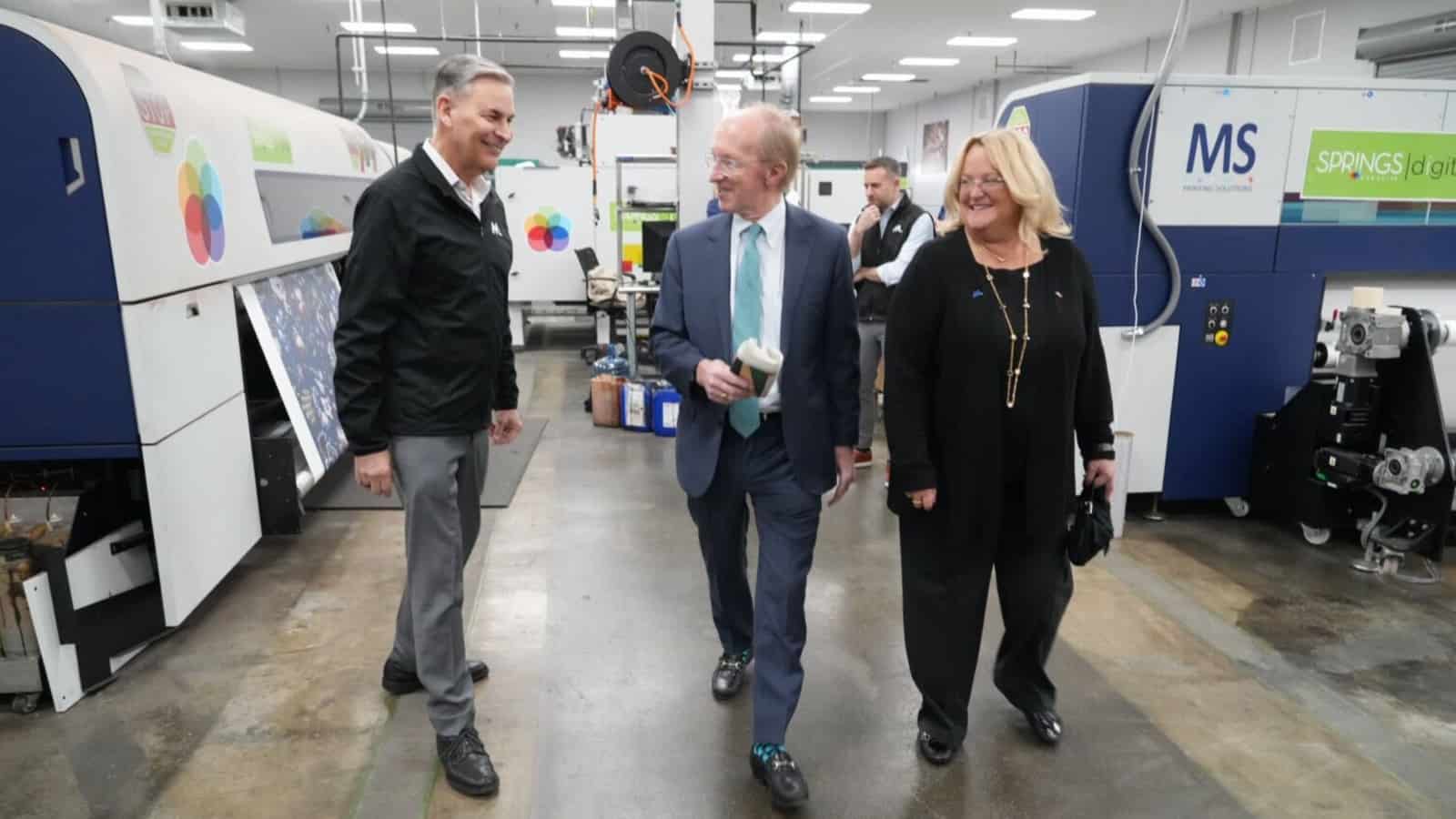
As candidates look to claim the support of manufacturers in 2024, the NAM launched its year-long 2024 Competing to Win Tour in South Carolina, days ahead of the South Carolina GOP primary.
- The tour spotlights the issues critical to winning not just manufacturers’ votes but also more manufacturing in the U.S.
Why it’s important: “We came to South Carolina to showcase the people and stories behind our industry and to translate their perspectives into action that will make our industry and country stronger,” said Johnson & Johnson Executive Vice President and Chief Technical Operations & Risk Officer and NAM Board Chair Kathy Wengel, who joined NAM President and CEO Jay Timmons, South Carolina Chamber of Commerce President and CEO Bob Morgan and South Carolina Manufacturers Alliance President and CEO Sara Hazzard on the first day of the tour.
- “Building these strong relationships beyond Washington, D.C., in the cities and states driving our sector deepens our understanding of regional challenges and reinforces the NAM as the leading voice representing all manufacturers, large and small,” Wengel added.
The launch: The tour began at Milliken & Company’s headquarters in Spartanburg on Wednesday, a poignant reminder of the importance of just one global technology-based manufacturer to lives, innovation and progress.

- The company’s 3,200 associates in the Palmetto State, as well as its broader U.S. and global team, make everything from safety gear and wound dressings and bandages to eco-conscious materials and technological innovations, such as digital printing, flooring, sustainable coating additives and more.
- “The average person touches about 30 to 50 [Milliken products] a day,” said Milliken President and CEO Halsey Cook.
- “Milliken embodies what we believe: manufacturing makes a positive difference. Their commitment to sustainability, ethics (named a World’s Most Ethical Company 17 years running) and a people-first workplace create a ripple effect,” said Timmons. “It’s why we need everyone supporting the success of manufacturers in South Carolina and the United States—to empower companies just like Milliken and help us grow more of them right here in America,” Morgan emphasized.
- “Milliken is a remarkable brand ambassador for the entire manufacturing industry in the United States,” summed up NAM Managing Vice President of Brand Strategy Chrys Kefalas. “As Michael Brown, Milliken’s executive vice president of operations, conveyed to us, the company is showing that digital transformation and artificial intelligence can be a force for good, helping its people leverage data analytics, for example, accelerating innovation and making modern manufacturing even more exciting for the next generation to be a part of.”
A boom story: Springs Creative Products Group CEO Derick Close, who heads several small enterprises in South Carolina, brought the NAM tour to Fort Lawn, South Carolina, where state-private partnerships and sound competitiveness policies have led to a boom in manufacturing investment and jobs.
- According to Close, recent investments in the community exceed $2.5 billion and stand to add 1,500 new jobs.
- Close, who is an economic development champion for South Carolina, took time to brief the group on how the area is ground zero as well in the story of the revival—and revolution—happening for the U.S. textile manufacturing sector, showing that U.S.-based textile manufacturers can compete against the rest of the world at quality, speed and price, so long as misguided policies don’t impede current advances. Springs Creative’s digital printing facility, which the NAM toured, is just one example. Springs Creative produces fabrics for such companies as Disney, Tempur-Pedic and Walmart.
- An added highlight of Close’s showcase was a tour of the new 1.5-million-square-foot, $423 million E. & J. Gallo wine and spirits production and distribution center—a testament to U.S. ingenuity and the more than 275 jobs it’s already created (with more on the way) to produce the best-selling spirit in the U.S.
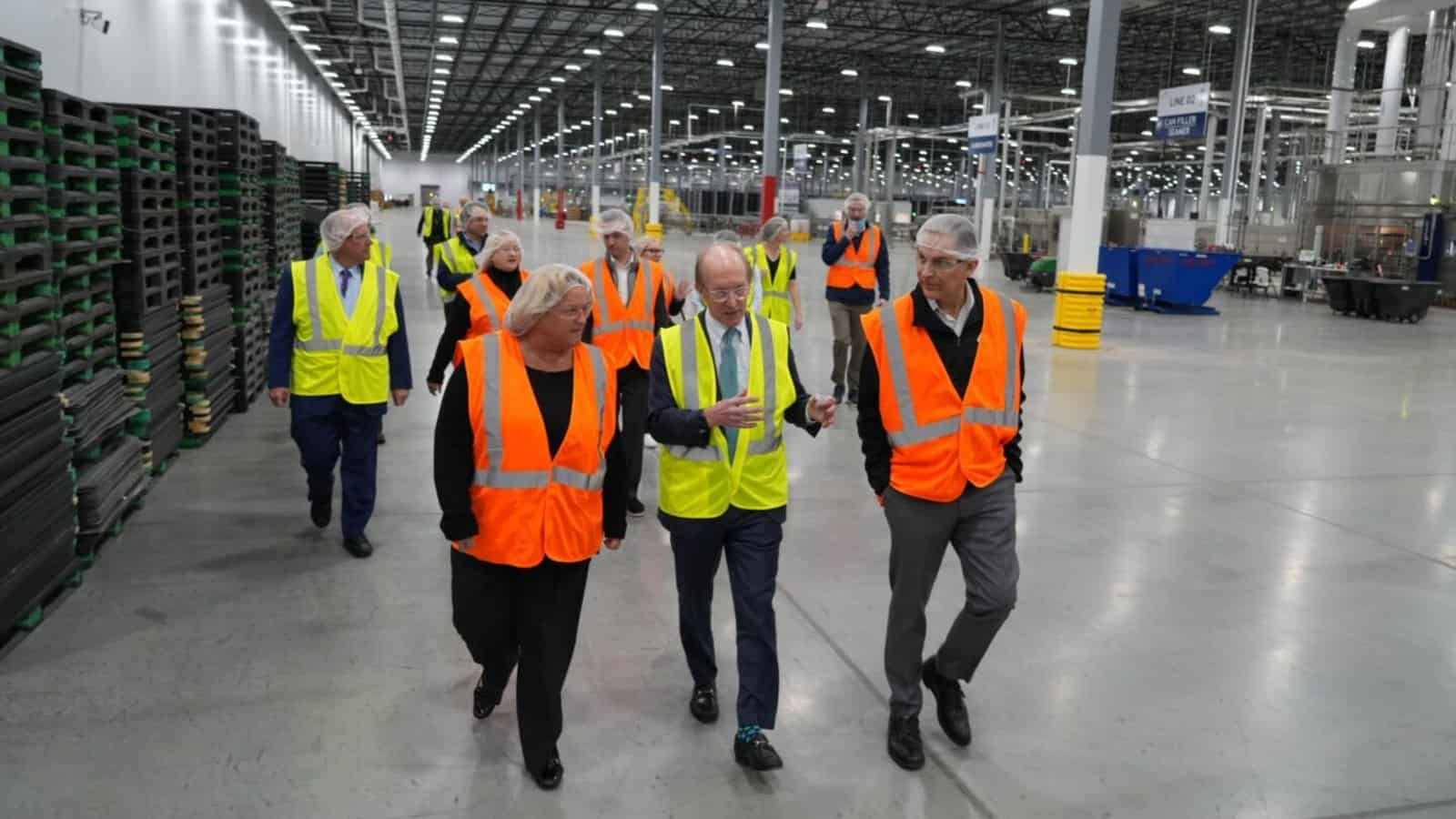
The message: The discussions at Milliken and Springs Creative focused on the need for policies that support manufacturing’s growth, from R&D incentives and competitive taxes to sensible regulations, resilient supply chains and permitting reform, to workforce development, including immigration reform, and energy policy.
The platforms: As newsrooms dwindle, the NAM is stepping into the breach, using its platforms, like NAM.org, social media and its email newsletters, including Input, to amplify manufacturing’s narrative. It’s a bid to ensure that as policymakers and candidates court manufacturers, they’re armed with real stories and concrete policy needs from the ground.
Looking ahead: The tour will continue across the United States, gathering insights and stories to bolster the NAM’s advocacy efforts. Next up: the Competing to Win Tour brings the NAM State of Manufacturing Address to Roseville, Michigan, as well as to Sanders Chocolate and Triumph Gear Systems in Macomb County on Thursday.
NAM to House: Overturn Air Standard
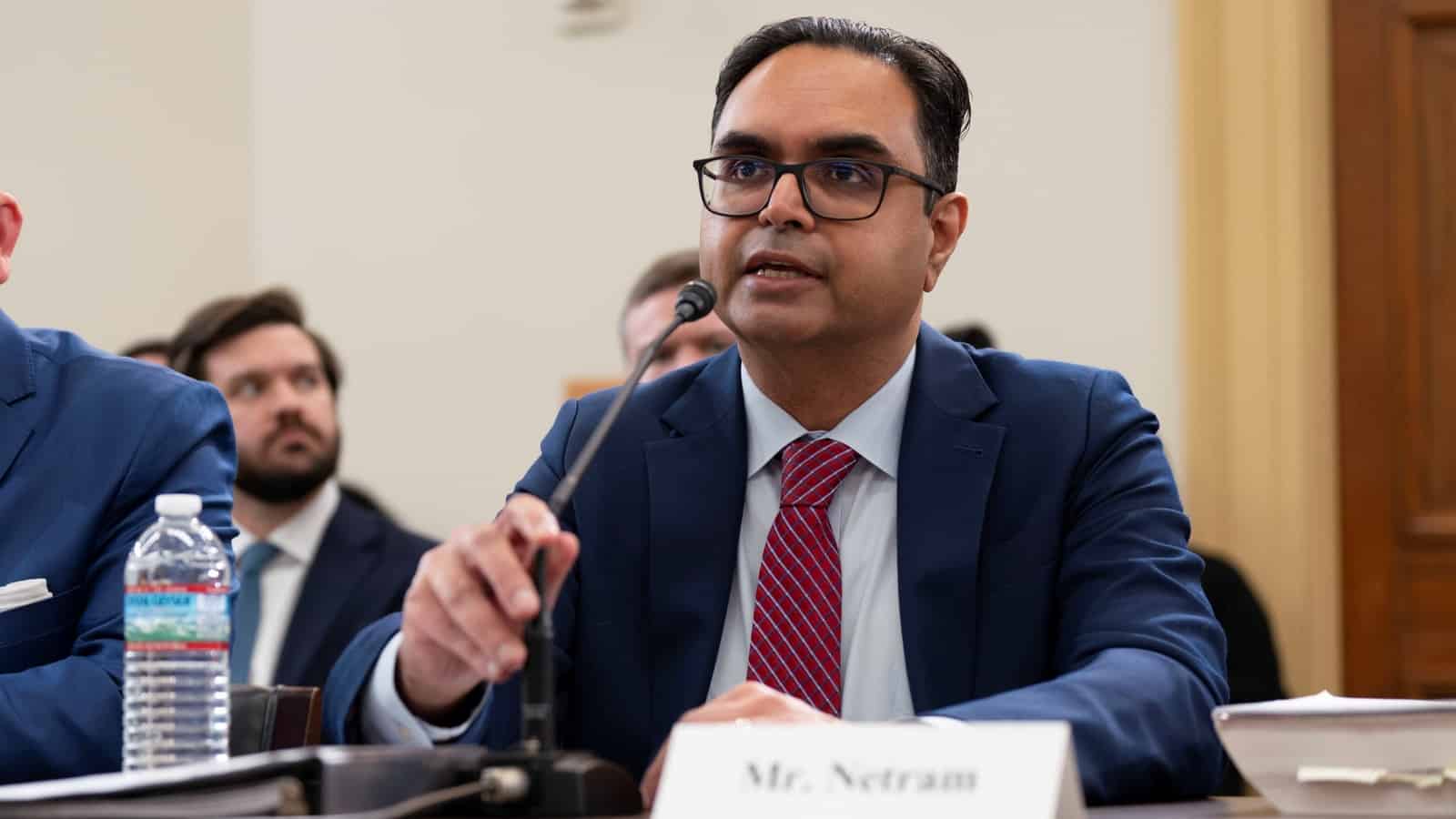
The Environmental Protection Agency’s recently finalized standard for particulate matter (PM2.5) will hamstring U.S. economic growth, job creation and competitiveness—and it must be reversed, the NAM told the House Thursday.
What’s going on: “The EPA’s unworkable PM2.5 standard … of 9 [micrograms per cubic meter of air] is in line with background levels of particulate matter in many parts of the country,” NAM Managing Vice President of Policy Chris Netram told committee members during “Safeguarding American Prosperity and People’s Livelihoods: Legislation to Modernize Air Quality Standards,” a hearing of the House Energy and Commerce Subcommittee on Environment, Manufacturing and Critical Materials.
- “In other words, the standard is now so low that companies will be expected to reduce their emissions below what naturally occurs.”
- The result of an overly stringent National Ambient Air Quality Standards level: Large swaths of the U.S. will be forced into “nonattainment” status, making permitting for critical infrastructure nearly impossible and all but guaranteeing job cuts, not growth, Netram said in his testimony, which Bloomberg (subscription) covered.
Why it’s important: A particulate matter standard of 8 micrograms per cubic meter of air—only slightly below the newly finalized level—would result in a loss of up to $200 billion in economic activity and almost 1 million jobs, according to a recent NAM study.
- As far as global competitiveness is concerned, the new limit effectively cuts America off at the knees, Netram continued. “Europe’s current PM standard is 25; China’s is 35. If we want the next manufacturing dollar to be spent in America rather than abroad, a standard of 9 is simply not feasible.”
What should be done: Lawmakers should introduce a Congressional Review Act resolution to overturn the new standard as soon as possible, Netram urged. The NAM also highlighted key NAAQS reform policies Congress is considering:
- Extend the EPA review period to 10 years.
- Allow the EPA to count wildfire mitigation as exceptional “rather than holding manufacturers accountable for PM they can’t control.”
- Require the EPA to consider the economic effects of a tightened standard.
NAM: Regulatory Onslaught Disproportionately Hits Small Manufacturers
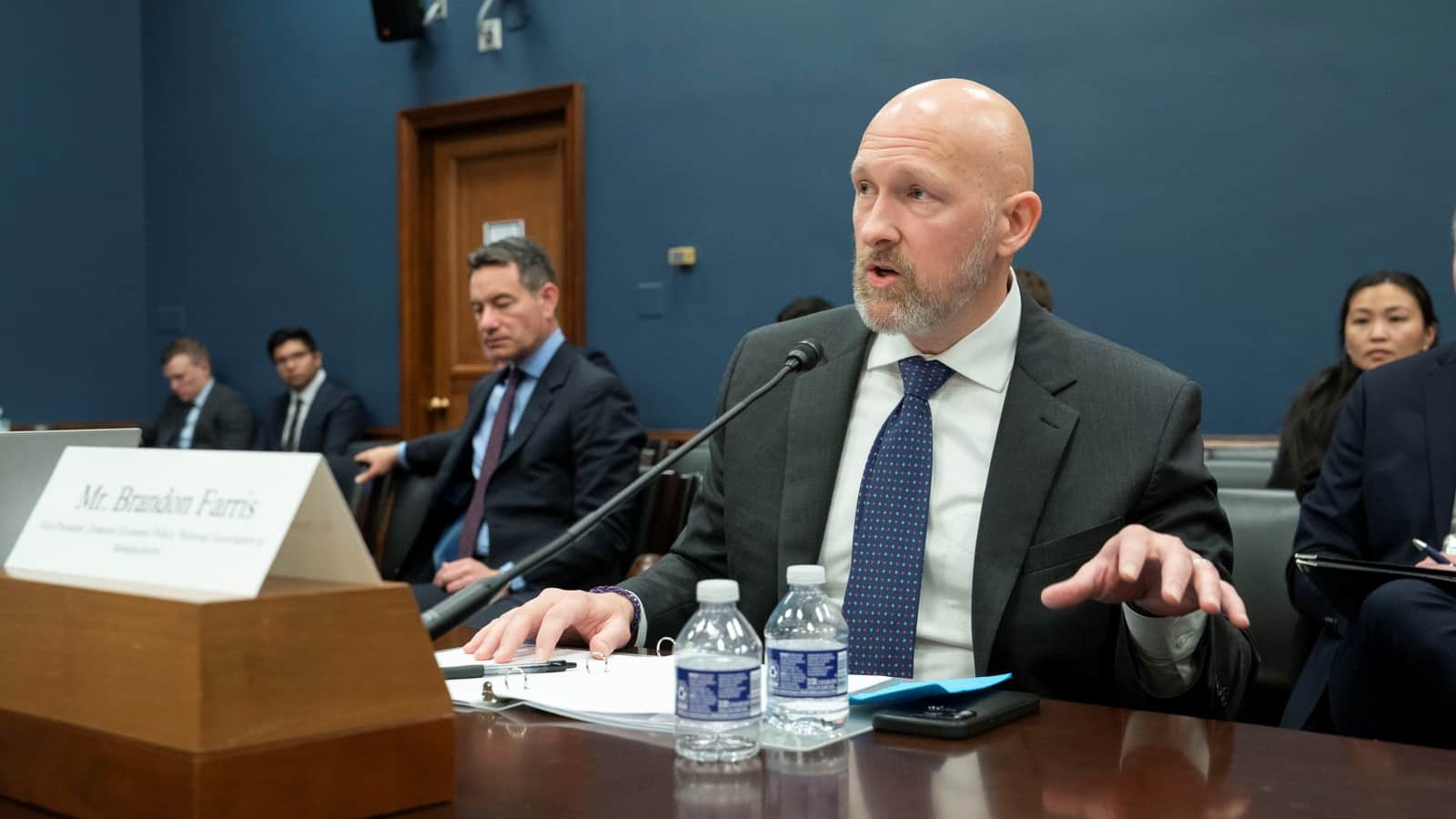
Small businesses are a critical part of both manufacturing and the U.S. economy at large, but the federal government’s costly regulatory onslaught is putting their continued existence at risk, the NAM told House lawmakers Wednesday.
What’s going on: “In the manufacturing sector, the majority of firms are small,” NAM Vice President of Domestic Policy Brandon Farris told the House Committee on Small Business during the hearing “Burdensome Regulations: Examining the Impact of EPA Regulations on Main Street.”
- “These firms are the backbone of the manufacturing supply chain, often producing key components for larger firms … [but] manufacturing faces significant headwinds in the form of the cost, complexity and uncertainty associated with overreaching and burdensome federal regulations.”
Why it’s important: The seemingly endless conveyor belt of new federal rules for the industry is costing manufacturers “shocking” amounts, disproportionately imperiling manufacturers—small ones in particular, Farris continued.
He cited NAM data finding that:
- The federal cost of regulations for manufacturers in 2022 was roughly $350 billion, a 25% increase from 2012; and
- The average manufacturer in the U.S. pays $29,100 per employee per year to comply with federal rules, while for the average small manufacturer, that price is $50,100.
Where it’s coming from: Farris cited other recent examples of onerous federal rulemaking, including:
- The Environmental Protection Agency’s recently finalized update to the National Ambient Air Quality Standard from 12 micrograms per cubic meter of air to 9 micrograms, a level approaching naturally occurring levels in many parts of the U.S., according to Farris, and one that “will make manufacturing in the U.S. less competitive globally”;
- The Department of Energy’s recent freeze of liquefied natural gas export permits, which, given increased European reliance on U.S. LNG since the start of Russia’s war in Ukraine, risks “leav[ing] our allies [and] our manufacturers in the cold”; and
- The Securities and Exchange Commission’s proposed climate disclosure rule, which “would increase manufacturers’ compliance costs dramatically, divert resources from job creation and growth, expose companies to increased liability, reveal proprietary and confidential information and ensnare wide swaths of the manufacturing supply chain.”
What must be done: Manufacturers aren’t asking legislators to cut corners, Farris said.
- Rather, they are seeking “regulatory certainty that can guide investment decisions and ensure that this country’s economic competitiveness is not outpaced or outflanked or overtaken by nations that do not share our values.”
To learn more about the high cost of overregulation, visit Manufacturers for Sensible Regulations, a coalition created by the NAM and members of the NAM’s Council of Manufacturing Associations and Conference of State Manufacturers Associations that’s intended to address the recent regulatory onslaught from federal agencies.
Rinnai Fights for Efficient Water Heaters
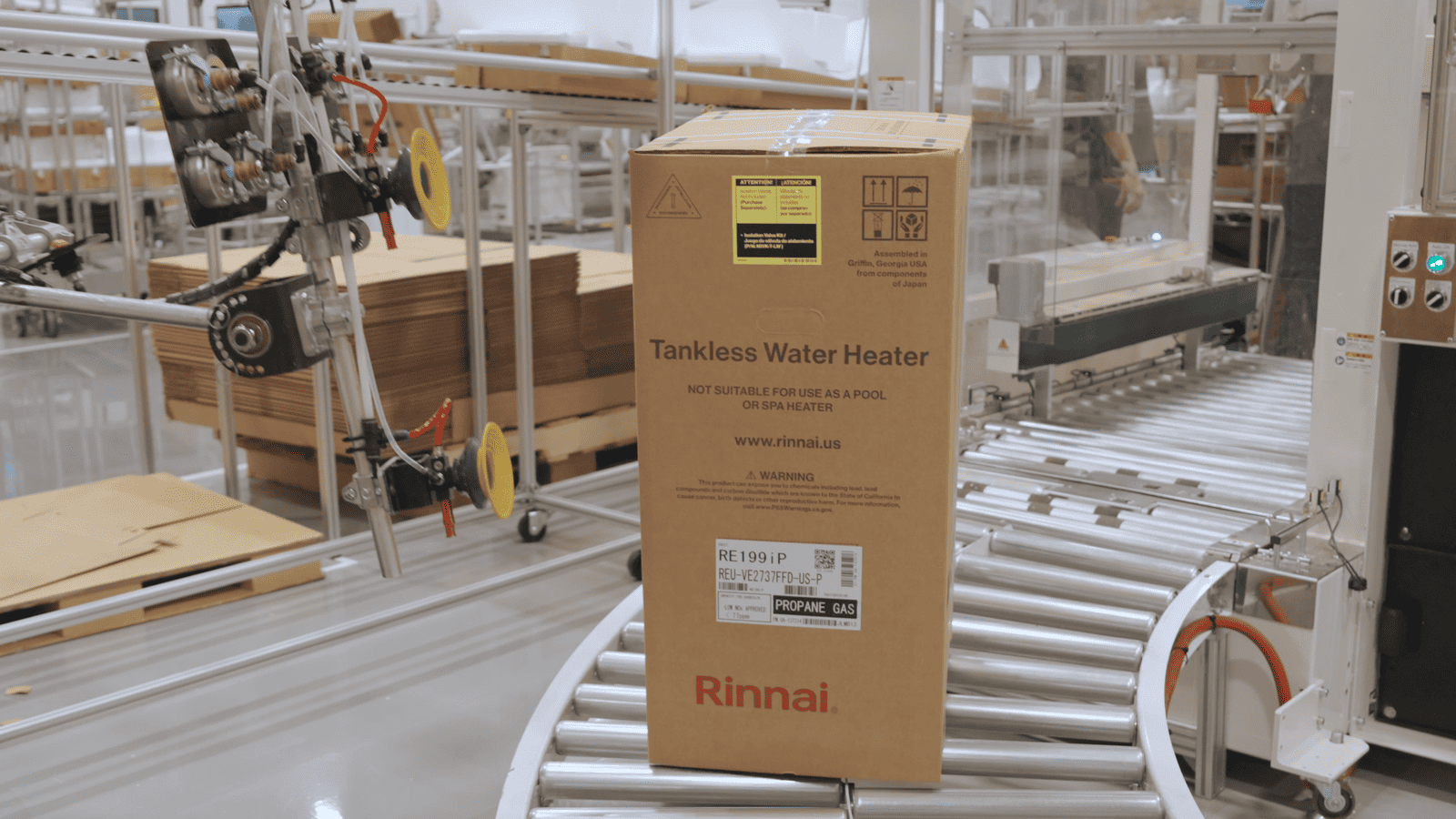
For nearly 50 years, Rinnai America Corporation has been selling innovative products in the United States. But as the Department of Energy prepares to unveil new rules in April, the water heater manufacturer is bracing for a big—and unnecessary—setback to its operations.
The background: There are a lot of water heater options on the market, and consumers must make a few key choices.
- First, they can choose between electric and gas heaters.
- Second, if they choose a gas heater, they can select one with a tank or one without.
- Finally, even tankless gas heaters come in two forms: condensing or noncondensing. Condensing heaters are used generally in colder environments, while noncondensing units are better for warmer climates.
The rule: The Department of Energy has proposed regulations on gas water heaters that would go into effect in 2029.
- However, the proposed efficiency requirements for tankless gas water heaters are so strict that noncondensing tankless units would not qualify—removing a cost-effective option from the market, and one that is in fact comparatively efficient.
- “The DOE is not taking into consideration what is best for the consumer, best for the industry and best for the environment overall,” said Frank Windsor, president of Rinnai America Corporation. “This is a shortsighted decision that doesn’t take into account the ramifications.”
The consumer impact: The DOE’s rule would restrict consumer choice severely by creating a de facto ban on noncondensing tankless heaters.
- “Consumers are getting hurt,” said Windsor. “Around 20% of consumers want tankless options”—including noncondensing tankless heaters.
The industry effect: Rinnai invested $70 million in 2022 in a new Georgia facility that makes noncondensing tankless gas heaters.
- “We built this new facility to make tankless water heaters that give consumers significant energy efficiency at a low price—and now the DOE is saying that, by 2029, you can’t make noncondensing units anymore,” said Windsor.
- “We’ve got close to 200 people working for us in Griffin, Georgia, so it impacts a lot of people.”
The innovation loss: According to Windsor, the rule is also counterproductive because it forces companies like Rinnai to reallocate funds that otherwise could go toward product innovation.
- “We’re going to have to spend money to retool that plant, and then we’ll get taxed on the capital for the plant that we can’t use anymore—and that’s all money that we would’ve spent on product innovation,” said Windsor.
The last word: “Why would you eliminate the availability of a cost-effective, efficient product and force the consumer to buy a more expensive option?” asked Windsor.
Learn more about the high costs of regulations, and the extreme burden on small manufacturers, in this recent NAM study. And check out Manufacturers for Sensible Regulations, a coalition created by the NAM and members of the NAM’s Council of Manufacturing Associations and Conference of State Manufacturers Associations, which is intended to address the regulatory onslaught coming from federal agencies in recent years.
EPA Releases Punishing New Air Standard
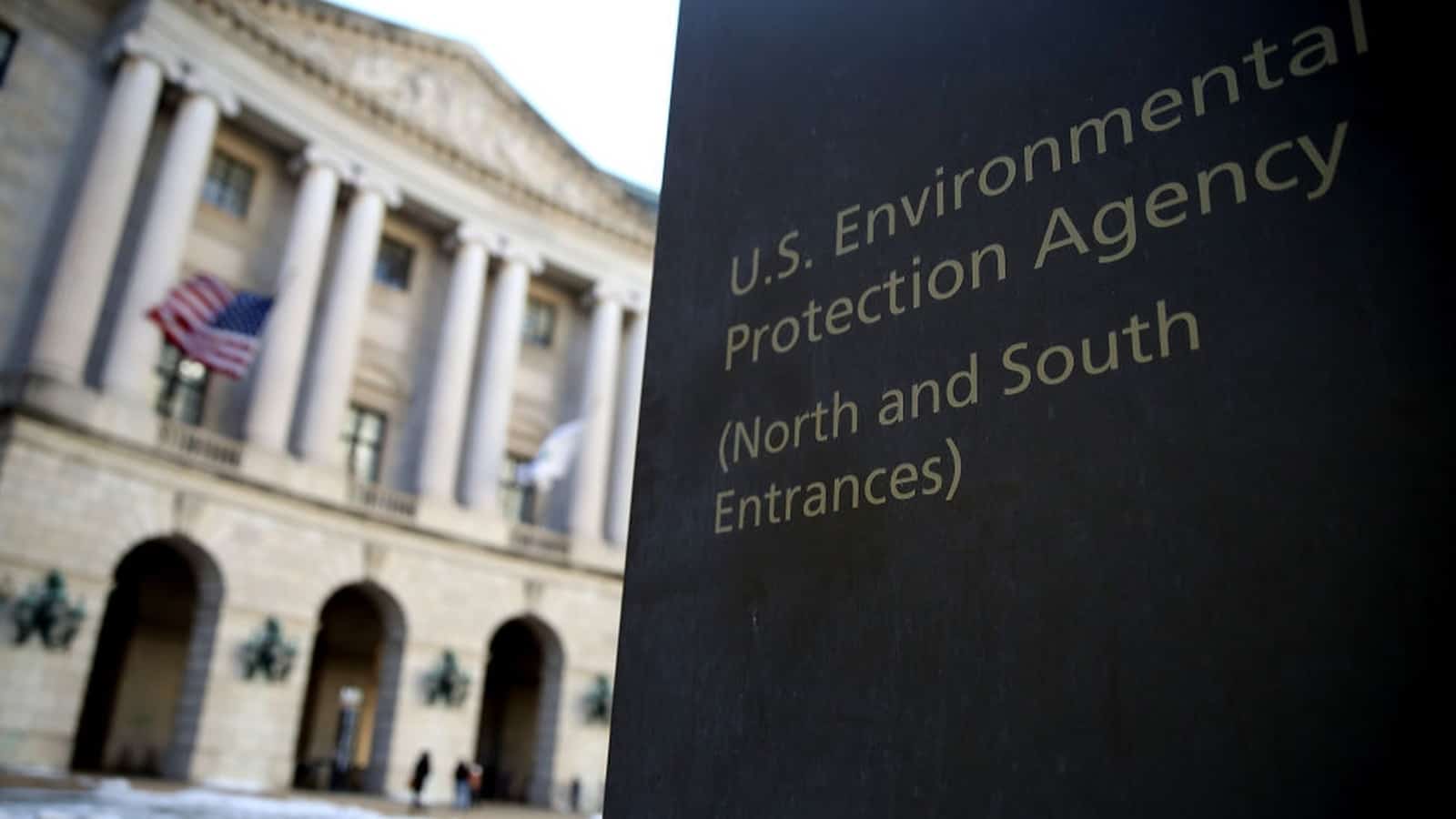
In a move that could have a significant negative impact on manufacturing in the U.S., the Environmental Protection Agency on Wednesday finalized an update to the federal air quality particulate matter standard.
What’s going on: The EPA announced a significantly stricter standard for fine soot, lowering the National Ambient Air Quality Standards for fine particulate matter (PM2.5) from 12 micrograms per cubic meter of air to 9 micrograms.
The background: America’s air is actually cleaner than ever, due in large part to manufacturers’ commitment to innovation.
- In fact, the EPA recently reported that PM2.5 concentrations have declined by 42% since 2000.
- Yet, last year, the agency signaled that it was considering lowering the standards even further anyway—and while the NAM and manufacturers spoke out against the move, the EPA moved ahead.
The problem: If enacted, such an aggressive standard would make it far more difficult and costly for manufacturers to operate in the United States.
- It would put huge swaths of the country in “nonattainment,” meaning that they would not meet ambient air quality standards. Factories in nonattainment areas would be unable to operate. Permitting would become almost impossible, and economic development would grind to a halt.
- A recent NAM-commissioned analysis by Oxford Economics found that a standard at this level could reduce GDP by nearly $200 billion and cost as many as 1 million jobs through 2031.
Our take: “The Biden administration’s new PM2.5 standard takes direct aim at manufacturing investment and job creation in direct contradiction to the president’s stated goal of strengthening manufacturing in communities all across America,” said NAM President and CEO Jay Timmons.
- And it will “mak[e] an already gridlocked permitting system further gridlocked” and discourage long-term investments by manufacturers.
Unfair disadvantage, tough choices: It would put the U.S. at a disadvantage with global competitors, too, Timmons added.
- “Manufacturers in America will also be hard pressed to make long-term investment plans domestically as our global competitors have set more reasonable goals. The EU standard is currently 25, and a proposal there would be to reach 10 by 2030. The UK has a target of 10 by 2040.”
- And it would require state and local officials to make difficult decisions about which critical infrastructure projects in their areas move forward, Timmons continued.
High cost, little impact: What’s more, the tightened rule won’t address the greatest sources of particulate matter, according to NAM partners the American Forest & Paper Association and American Wood Council.
- The “EPA’s rule delivers a devastating blow to U.S. manufacturing and the economy while doing nothing to address the largest sources of particulate matter, including wildfire smoke,” they said in a joint statement. “This unworkable air rule undermines President Biden’s promise to grow and reshore manufacturing jobs.”
- “This administration has set the PM2.5 NAAQS at near background levels, ensuring permit gridlock for most manufacturing sectors around the country, while failing to address 84% of overall PM2.5 emissions.”
Next steps: The NAM has spoken out repeatedly against this stricter regulation and will continue to call on Congress to reverse it.
NAM in the news: AFP, Associated Press, Daily Caller, Fox News and Newsweek all covered the NAM’s response to the finalized rule.
The last word: “The U.S. already has some of the strictest air standards in the world, and thanks to manufacturers’ innovation and leadership, some of the cleanest air and best environmental records,” Timmons concluded. “Manufacturers will consider all options to reverse this harmful and unnecessary standard, because it is our duty to stand against policies that hold our country back.”
NAM-Supported PBM Bill Clears House Oversight Committee

Pharmacy benefit managers are contributing to the skyrocketing cost of health care for manufacturers and must be reined in—and that’s why the NAM supports the bipartisan Delinking Revenue from Unfair Gouging (DRUG) Act, passed yesterday by the House Oversight and Accountability Committee.
What’s going on: PBMs, created in the 1960s with the intention of keeping prescription drugs affordable, are now doing the very opposite, the NAM informed the committee ahead of Tuesday’s markup.
- PBMs “increas[e] the price that health plan participants pay for medicines,” NAM Vice President of Domestic Policy Charles Crain said. “By applying upward pressure to list prices that dictate what patients pay at the pharmacy counter, pocketing manufacturer rebates and failing to provide an appropriate level of transparency about their business models, PBMs increase health care costs at the expense of manufacturers and manufacturing workers.”
- In addition to other reforms, the DRUG Act would require “delinking”—ensuring that PBMs charge a flat rate for their services rather than charging a percentage of a medication’s list price. This critical reform would “remov[e] PBMs’ incentive to put upward pressure on list prices in order to maximize their own profits,” Crain said.
Why it’s important: The NAM—whose advocacy, including a six-figure ad campaign, helped lead the DRUG Act to passage by the House Oversight Committee—“has long favored delinking PBM compensation from the list price of medications, including in the commercial market,” Crain continued.
- The NAM will continue to advocate for PBM reforms that “will benefit employers by making PBM contracts more straightforward, transparent and predictable—and will benefit workers by reducing the prices they pay out of pocket for their prescriptions.”
